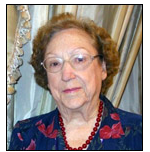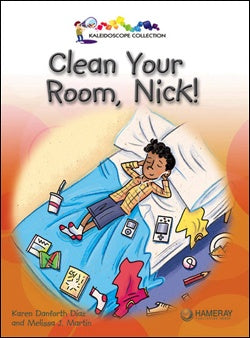 This is a guest blog post by Dr. Geraldine Haggard, who
is a retired teacher, Reading Recovery teacher leader, author, and university teacher. She spent 37 years in the Plano, TX school system. She currently tutors, chairs a committee that gifts books to low-income students, teaches in her church, and serves as a facilitator in a program for grieving children.
This is a guest blog post by Dr. Geraldine Haggard, who
is a retired teacher, Reading Recovery teacher leader, author, and university teacher. She spent 37 years in the Plano, TX school system. She currently tutors, chairs a committee that gifts books to low-income students, teaches in her church, and serves as a facilitator in a program for grieving children.
This is the third post in a series. You can see the first post
here
and the second post
here
.
The purpose of this series of blog posts is threefold: sharing the importance of the social studies standards, explaining how to combine the uses of the Language Arts and Social Studies in the first grade, and sharing ways to use Language Arts Standards and leveled books to deliver social studies expectations centered around homes. Specific books will be keyed to specific social studies standards as examples.
Use of Leveled Books to Deliver Social Studies Expectations for Grade One
I am listing (in alphabetical order) six examples of books appropriate for incorporating language arts standards with social studies expectations in grade one, along with suggestions for language arts activities. I’ll list the first three today, and the second three in the final post. If you’d like to use these ideas as lesson plans for these books, I’ve linked to where you can buy the books, but you can also use these suggestions as guidelines to apply to any similar books you might already have on hand.
1) Clean Your Room, Nick! by Karen Danforth Diaz and Melissa J. MartinExpectations:
-
Working together as a family
-
Using rules and responsibilities
-
Being independent within a family
Lesson suggestions:
- Vocabulary development (oral, reading, and writing) words include 'chores,' 'responsibilities,' and the question words 'why,' and 'where.' Model the words orally, Write the words on the board and read them with children as they are written. Include these words in the listening, speaking, writing, and reading activities suggested throughout this post. A list of the words could be a part of the students’ journals. They can refer to the list as they write.
- Use discussion groups to help students understand the importance of the expectations. Encourage them to use oral language and to be good listeners.
- "Why did Nick have a problem finding his belongings?"
- "Has this ever happened to you? Why?"
- "How do you think Nick's mom is feeling and why?"
- "Are there other things that Mom could be doing?"
- "What could have happened to Nick if he had not found his belongings?"
- "Where did Nick and Mom look for Nick's possessions?"
- "Should you be responsible for only your room?'
- "How can you help in other rooms of your home?"
- "If you look for ways to help without being told to do so, you are being independent. How do you think being independent would help the family?” (Answers might include less conflict, less work for parents, the entire family sharing responsibilities, etc.)
- Use a brainstorming activity and record on the board a list of chores that the children have in their homes. After the brainstorming, ask the students to illustrate and share a chore or responsibility and provide a title for the illustrations and writing. A book for the classroom library could be created from their work.
- Brainstorm rules that the children have in their homes. Discuss the difference between chores and rules. A rule might be based on not borrowing or using another family member's belongings without asking, or always being truthful. As a follow-up, different children might act out what happens when a certain rule is broken. The following suggestions may be used as children create a brief drama.
- Mary used her big sister's jewelry without permission. Show in actions what might happen
- Billy knocked a lamp off of a table. When his mom asked who did that, he said he did not. Show what might have happen between Billy and his mother.
- Ann wanted to play a video game and did not do her homework before supper. The family ate supper later than usual and Ann had to go to bed before her homework was done. Make believe you are Ann and her teacher. What might have happened? Ask them to use emotion words and body actions that could be the results of the breaking of the rules. Two students can plan and present their short dramas after using a possible list of rules displayed on the board.
- The book can be used as a read-aloud, in guided reading groups, or for independent reading. There are several days of activities suggested.
2)
Family Day
by Christine Jojola
Expectations:
- Understanding how families are different
- Understanding what a family is
- Recognizing that different families have different beliefs, customs, and traditions
Lesson suggestions:
- Vocabulary development words include 'family,' 'beliefs,' 'languages,' ' customs,' and 'traditions.'
- Ask the children to list in their journals the members of their families. They could then sit in groups of three or four and each member of the group can share the number of people in the family, number of children, and number of other family members (parents, grandparents, etc.) A bar graph could then be shared on the board: one child, two children, three children, four or more children, number of adults). The graph will show the differences in the composition of the families.
- Share the picture from the front of the book. Discuss what the picture tells them about the family in the book. The last picture in the book depicts two older family members. "Where is the family in the cover picture and the last page of the book? (Park; patio at home.) The students can draw a sketch of their homes and sit in small groups and share facts with another student or two.
- How many rooms?
- Do they have to share a room with someone else?
- What is in the yards?
- Is the home in the country or in a city?
After small group sharing, a representative from each group can discuss with the large group the results of sharing the sketches. What are some differences and likenesses?
- Why did Zavier wear different clothes or footwear on different days? Explain that the way a person dresses for playing ball is an example of a custom. The special clothes indicate what sport is to be enjoyed. The colors of the uniforms help identify the player’s team. Ask the children, "Is there a time that your family dresses in a different way? Why?" People from different countries may dress differently from others. Their way of dressing tells us about their culture.
- People from different cultures may celebrate holiday seasons in different ways. As children brainstorm, make a list of these cultural traditions for celebrating holidays in December.
- The family on the last page is wearing their best clothes. We call this 'dressing up.'
- “What do you think the family is about to do?”
- “Some families dress up to go to church or to parties. When does your family dress up?”
- “What is a special "family day' for your family. If you do this often, it becomes a custom or tradition.”
- The children could be invited to bring pictures of their families participating in a special family day that might be connected to a special holiday, etc. These could be displayed on a bulletin board labeled “SPECIAL CUSTOMS AND TRADITIONS.”
-
A culminating activity could be writing a story that includes all of the child's family and customs or traditions that are a part of the family. Other students and the teacher can serve as editors and advisors. Display and share the stories. Invite the child who wrote the story to share and explain the story he wrote.
3)
Helping Mom
by Jane Hunter
Expectations:
- Families have responsibilities
- Families work together
- Our families help us
Lesson suggestions:
- Vocabulary to be developed includes 'cleaning,’ 'washing,' 'independent,' 'setting,' 'rules,' 'volunteer,' 'responsibility.' These words can be entered in journals as they are used in discussion and/or reading. Children need to hear the words, use them as they speak, read, and write. Multiple uses of the words and multiple occasions for seeing the words can help the words become a part of the children's multi-vocabularies. Other words may need to be added to the list.
- The book can be used as a read-aloud. Set the purposes for listening to the story: What does the boy do to help his mom? How does his mom help him?
- As the first question is discussed, the picture of the boy helping can be shared as children sit around you, or shown on a screen or board. Later the book could be used in guided reading or placed in the class library.
- As the second question is discussed, share the homework pictures on the last two pages of the book and add sub-questions:
- "When do you need help with homework?”
- “If you can do your homework without help, what should you do?”
- “Is homework your responsibility or someone else's?"
- "What is a responsibility?"
- Ask each child to make a list of ways they help other members of their families. Give each child a medium-sized piece of paper and ask him to draw a picture of a way he helps. Use a bulletin board or poster board to make a collage of the pictures. Label it, “WAYS WE HELP AT HOME.”
- Ask each child to interview a parent and share what they hear the parent say can happen when the child helps. The next day, you can write a language experience activity with each child's name and their responses. As the teacher uses a pointer, each child can read what was recorded by his name.
- As a culminating activity, discuss the words 'volunteer' and 'independent.' Provide an opportunity for students to discuss the difference between an assigned task and a volunteered task. Share as an example the boy helping his mom with the baby. He probably also volunteered to help mom with baking. This means he did not have to be asked to do these things. We see the picture of him working independently with his homework. These pictures from the book could be shared again. Are there children who can share ways they help without being asked? If so, tell them that they are being independent and are volunteers!
The next and final post in this series will focus on the use of the remaining three books to tie these standards in with social studies standards and expectations. Check back next week to read more, or subscribe to the blog in the sidebar to get new posts delivered to your inbox!
~~~
Geraldine Haggard is the author of several books from our Kaleidoscope Collection Series . For more information about the Kaleidoscope Collection Series click HERE to return to our website or click the series highlight page to the left below.
















































![6 Fun and Easy Activities to Practice Sequencing [Grades K-1]](http://www.hameraypublishing.com/cdn/shop/articles/Red_Typographic_Announcement_Twitter_Post-5_bf1ae163-a998-4503-aa03-555b038d1b76_600x.png?v=1689961568)
![Leveraging Prior Knowledge Before Writing and Reading Practice [Grades 1–2]](http://www.hameraypublishing.com/cdn/shop/articles/Red_Typographic_Announcement_Twitter_Post-4_600x.png?v=1689961965)




